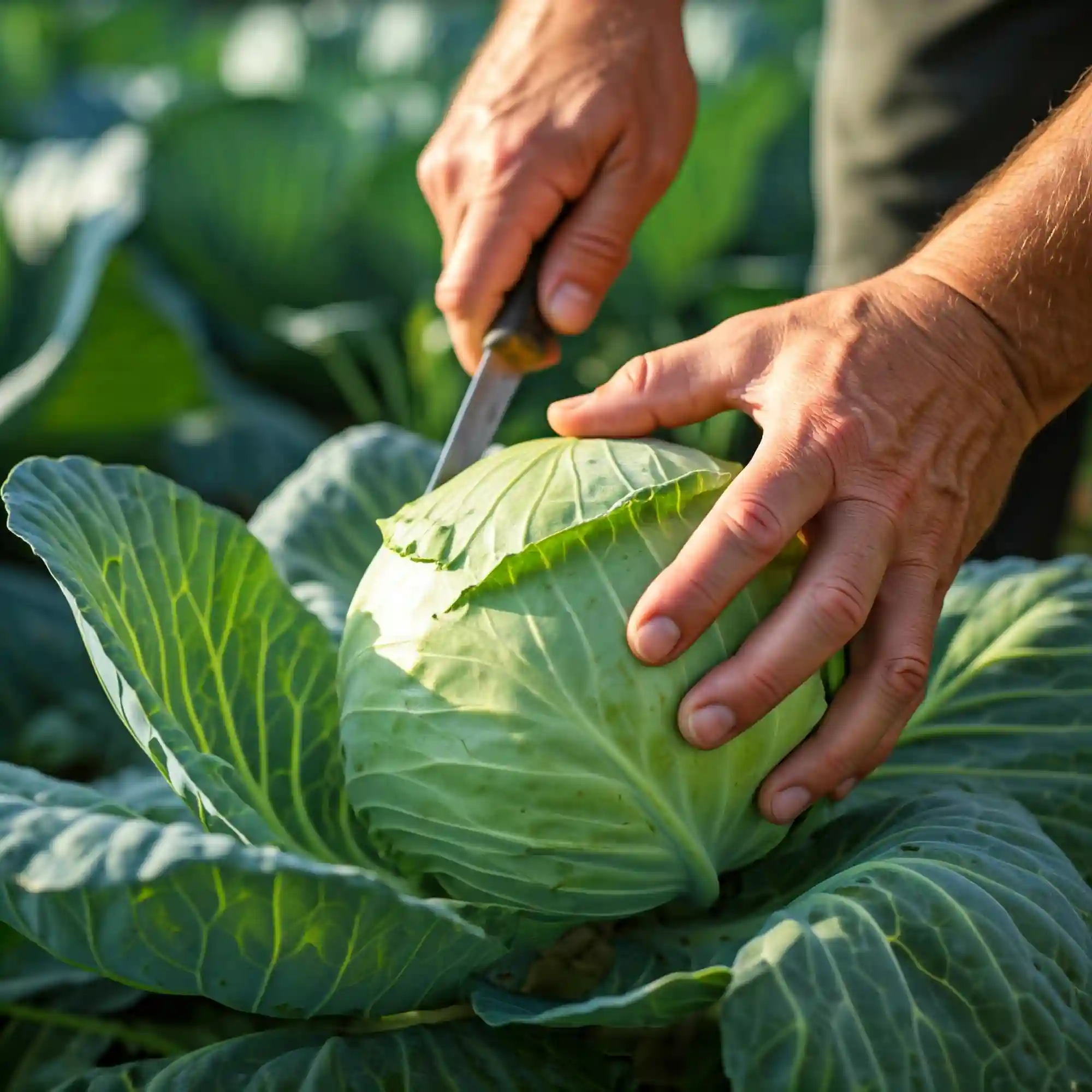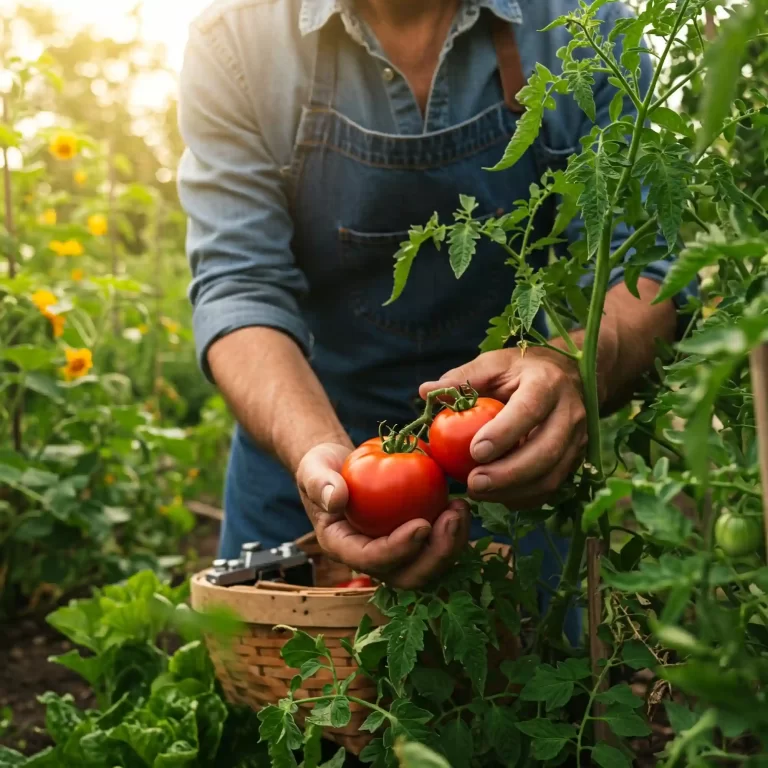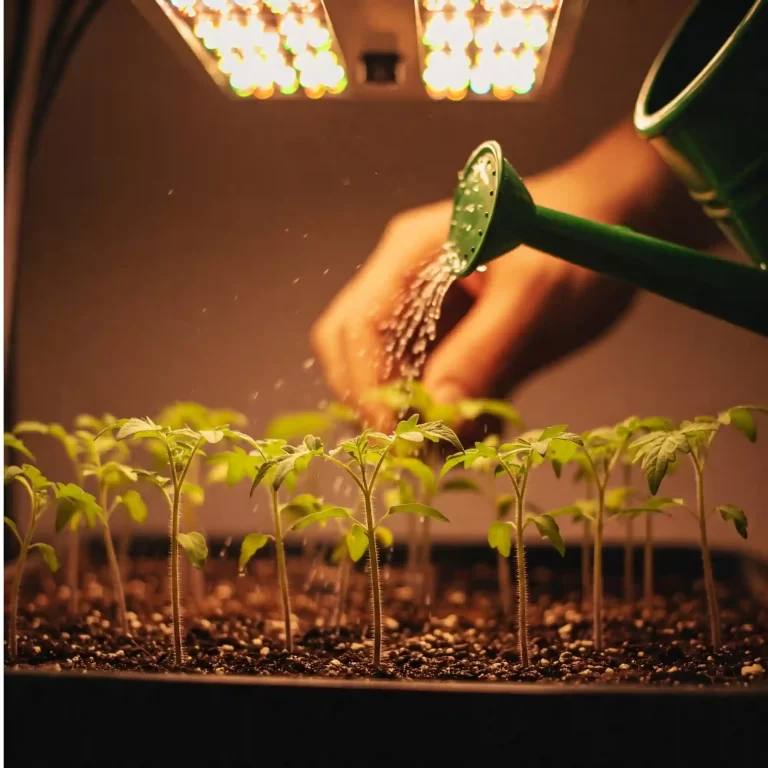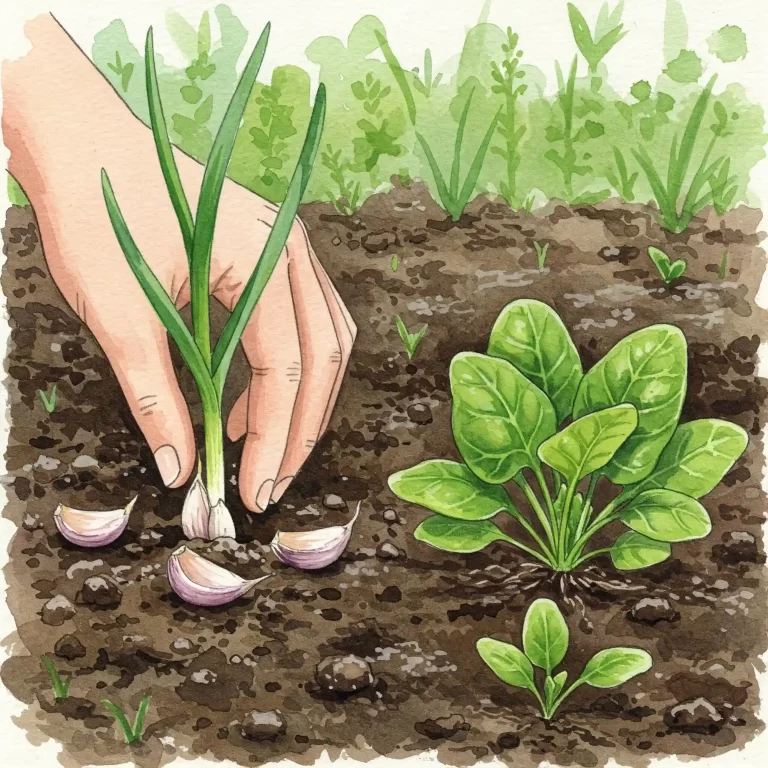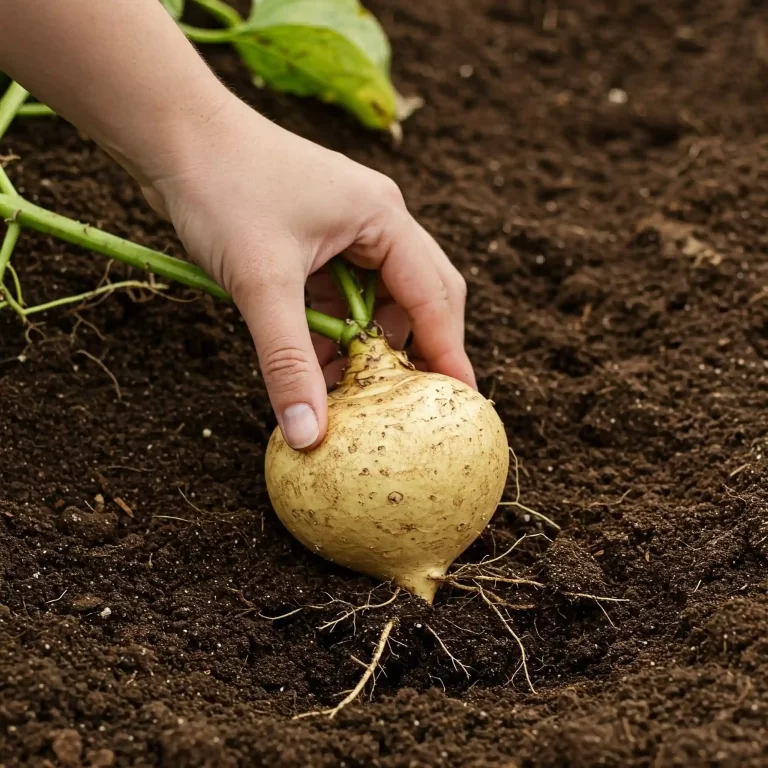From Garden to Jar: Crafting the Perfect Sour Cabbage
Have you ever bitten into a crisp, tangy piece of homemade sauerkraut and thought, “I wish I could make this myself”? The store-bought stuff just doesn’t compare to the vibrant flavors you can achieve at home. The problem is, many people think making delicious fermented cabbage is complicated. They might picture elaborate equipment, mysterious processes, and a high risk of failure. This fear often prevents them from even trying. But what if I told you that growing your own cabbage specifically for fermenting is not only achievable but also incredibly rewarding? It’s simpler than you might think, and it gives you complete control over the quality and taste of your final product. I’m here to tell you that growing your own sour cabbage is not only possible but also a fulfilling journey that connects you to the origins of this delicious and healthy food. In this guide, I’ll walk you through everything you need to know about how to grow sour cabbage vegetable, from seed to jar, so you can enjoy the satisfying crunch of homemade sauerkraut and other fermented delights. This guide is designed with you in mind – the busy individual, likely between 25 and 45, who appreciates fresh, homegrown food and enjoys dabbling in the art of fermentation.
Growing your own “sour cabbage vegetable”, as some call it, offers a unique set of advantages. You have complete control over the growing process, from the type of soil to the methods of pest control. This means you can ensure your cabbage is grown organically, free from harmful chemicals, which is especially important when you’re going to be fermenting it. Plus, there’s nothing quite like the taste of freshly harvested produce. The flavor is brighter, more vibrant, and undeniably superior to anything you can find in a store. I’ve found that the simple act of nurturing a plant from seed to harvest creates a deeper appreciation for the food we eat.
This guide will cover everything from selecting the right cabbage varieties to harvesting at the peak of ripeness. You’ll learn how to nurture your plants through every stage of growth, ensuring they are healthy and produce the perfect heads for fermentation. We’ll also delve into the specific needs of cabbage intended for souring, addressing factors like soil health, watering, and pest management. I believe that by understanding these nuances, you will be well on your way to creating truly exceptional homemade ferments.
I remember my first attempt at making sauerkraut. I used store-bought cabbage, and while the result was decent, it lacked a certain something. It wasn’t until I started growing my own cabbage that I truly understood the impact of fresh, homegrown ingredients. The difference was remarkable. The sauerkraut was crisper, tangier, and had a depth of flavor I had never experienced before. That’s when I realized the true value of growing your own “sour cabbage vegetable”.
When we talk about “sour cabbage vegetable,” we’re talking about cabbage specifically cultivated for fermentation. This process, also known as lacto-fermentation, transforms the cabbage into a tangy, probiotic-rich food. The “sour” taste comes from the lactic acid produced by beneficial bacteria during fermentation. This process not only creates unique flavors but also preserves the cabbage and enhances its nutritional value.
This guide is your comprehensive resource on how to grow sour cabbage vegetable, covering topics such as:
- Choosing the right cabbage varieties: Selecting varieties specifically suited for fermentation.
- Planting and caring for your cabbage: From seed starting to harvesting.
- Protecting your plants from pests and diseases: Utilizing organic and effective methods.
- Connecting growing to fermenting: Understanding how the growing process impacts the final product.
By the end of this guide, you’ll not only know how to grow sour cabbage vegetable but also understand why each step is essential for creating the best possible ferments. So, let’s get started on this exciting journey from garden to jar!
Choosing the Right Cabbage Varieties for Souring
Not all cabbages are created equal, especially when it comes to fermentation. Some varieties simply lend themselves better to the process, resulting in sauerkraut, kimchi, or other fermented delights with superior flavor and texture. Choosing the right cabbage is a crucial first step in your journey to growing sour cabbage vegetable. Through my years of gardening, I’ve learned that selecting the correct variety can make all the difference in the final product. You want a cabbage that will hold up well during fermentation, maintaining its crispness and developing complex flavors.
When you think about growing cabbage for souring, you’re essentially looking for varieties that are dense, firm, and have a good sugar content. These characteristics are essential for successful fermentation. The density ensures a good crunch in your final product, while the sugar content provides the necessary food for the beneficial bacteria that drive the fermentation process.
Here are a few of my top recommendations for cabbage varieties perfect for souring:
- ‘Brunswick’: This heirloom variety is a classic choice for sauerkraut. It produces large, dense heads with a high sugar content, making it ideal for fermentation. I’ve found that ‘Brunswick’ consistently delivers a crisp, tangy sauerkraut with a well-balanced flavor.
- ‘Danish Ballhead’: Another excellent choice for sauerkraut, ‘Danish Ballhead’ is known for its very firm, tightly packed heads. This variety holds up exceptionally well during fermentation, maintaining its texture even after weeks in the crock.
- ‘Red Acre’: If you’re looking to add a splash of color to your ferments, ‘Red Acre’ is a great option. This red cabbage variety has a slightly peppery flavor that adds a unique dimension to sauerkraut and other fermented dishes. Plus, the vibrant red color creates a visually stunning final product.
While these are some of my favorites, other varieties can also be used for fermentation. However, I generally recommend avoiding loose-leaf varieties like Napa cabbage, as they tend to become mushy during the fermentation process. You want a cabbage that will retain its crispness and provide a satisfying crunch.
Here’s a quick comparison of the key characteristics of these varieties:
| Variety | Head Size | Density | Sugar Content | Best For |
| ‘Brunswick’ | Large | High | High | Sauerkraut |
| ‘Danish Ballhead’ | Medium | Very High | Medium | Sauerkraut |
| ‘Red Acre’ | Medium | High | Medium | Sauerkraut, Kimchi |
I encourage you to experiment with different varieties to find your personal favorite. Each cabbage will impart its own unique flavor and texture to your ferments. The most important thing is to choose a cabbage that is firm, dense, and feels heavy for its size. This is a good indication of its sugar content and suitability for fermentation.
Now that you know which cabbages are best for souring, you’re one step closer to creating delicious homemade ferments.
How to Plant Sour Cabbage: From Seed to Transplant
Planting your sour cabbage correctly is essential for a successful harvest. Whether you choose to start your seeds indoors or direct sow them into the garden, there are a few key steps to follow. I’ve found that starting seeds indoors gives you a head start, especially if you live in a region with a shorter growing season. However, direct sowing can be just as effective if you have the right conditions.
Starting Seeds Indoors (If Applicable)
If you opt to start your seeds indoors, timing is crucial. You’ll want to start your seeds about 6-8 weeks before the last expected frost in your area. This will give your seedlings enough time to develop a strong root system before they are transplanted into the garden.
Here’s a list of supplies you’ll need to get started:
- Seed trays or small pots
- Seed starting mix (a light, well-draining soil mix)
- Grow lights (to provide adequate light for seedlings)
- Heat mat (optional, but can help with germination)
Here are the steps I follow when starting cabbage seeds indoors:
- Fill your seed trays or pots with seed starting mix.
- Moisten the mix thoroughly.
- Sow the seeds about ¼ inch deep.
- Cover the trays with a clear plastic lid or plastic wrap to create a humid environment.
- Place the trays in a warm location (around 70-75°F).
- Once the seedlings emerge, remove the plastic cover and place them under grow lights.
- Keep the soil moist but not soggy.
Direct Sowing (If Applicable)
If you prefer to direct sow your cabbage seeds, you’ll need to wait until after the last frost has passed and the soil has warmed up. Cabbage prefers soil temperatures between 60-70°F for optimal germination.
Here’s how I prepare the garden bed for direct sowing:
- Choose a location that receives at least 6 hours of sunlight per day.
- Prepare the soil by loosening it and adding compost or other organic matter.
- Create shallow furrows in the soil.
- Sow the seeds about ½ inch deep.
- Cover the seeds with soil and gently firm the soil.
- Water the area thoroughly.
Transplanting Seedlings
Whether you started your seeds indoors or purchased seedlings from a nursery, transplanting them into the garden is a critical step. Here’s how I ensure a successful transplant:
- Harden off your seedlings by gradually exposing them to outdoor conditions for a week or two before transplanting.
- Choose a cloudy day or late afternoon to transplant to minimize stress on the seedlings.
- Dig holes that are slightly larger than the root ball of the seedlings.
- Gently remove the seedlings from their containers and place them in the holes.
- Fill the holes with soil and gently firm the soil around the base of the seedlings.
- Water the seedlings thoroughly.
By following these steps, you’ll give your sour cabbage plants a strong start and set them up for a bountiful harvest.
How to Care for Your Sour Cabbage Plants
Once your cabbage seedlings are safely in the ground, the real work begins. Proper care is essential for ensuring healthy growth and a bountiful harvest of sour cabbage. I’ve learned that consistent attention to a few key factors can make all the difference.
Sunlight
Cabbage thrives in full sun, requiring at least 6 hours of direct sunlight per day. When choosing a location for your cabbage patch, select a spot that receives plenty of sunlight throughout the day. If you live in a particularly hot climate, some afternoon shade can be beneficial to prevent the plants from overheating.
Watering
Consistent moisture is crucial for cabbage growth. Water your plants regularly, especially during dry periods. Aim to keep the soil consistently moist but not waterlogged. I recommend watering deeply at the base of the plants to avoid wetting the leaves, which can increase the risk of disease.
Soil
Cabbage prefers well-draining soil that is rich in organic matter. Before planting, amend your soil with compost or other organic materials to improve its fertility and drainage. A soil pH between 6.0 and 7.0 is ideal for cabbage growth.
Fertilizing
Regular fertilization is essential for providing your cabbage plants with the nutrients they need to thrive. I recommend using a balanced fertilizer with a 10-10-10 or 14-14-14 NPK ratio. Apply the fertilizer according to the package instructions, typically every 2-3 weeks during the growing season.
Weeding
Weeds can compete with your cabbage plants for water, nutrients, and sunlight. Regularly remove weeds from the garden bed to prevent them from becoming a problem. Mulching around your cabbage plants can help suppress weed growth and conserve moisture.
Additional Tips for Caring for Your Sour Cabbage:
- Monitor for Pests and Diseases: Keep a close eye on your plants for signs of pests or diseases. Take action promptly to prevent problems from spreading.
- Provide Support: As your cabbage heads grow larger, they may need some support to prevent them from toppling over. Use stakes or cages to provide support if needed.
- Practice Crop Rotation: To prevent soilborne diseases, avoid planting cabbage in the same location year after year. Rotate your crops to different areas of the garden each season.
By following these care tips, you’ll be well on your way to a successful harvest of sour cabbage.
Protecting Your Sour Cabbage from Pests and Diseases
One of the most challenging aspects of growing any vegetable, including sour cabbage, is protecting your plants from pests and diseases. I’ve encountered my fair share of garden invaders over the years, and I’ve learned that a proactive approach is key. By understanding the common threats to cabbage and implementing preventative measures, you can minimize damage and ensure a healthy harvest.
Common Cabbage Pests
Here are some of the most common pests that can plague your sour cabbage plants:
- Cabbage Worms: These green caterpillars are the larvae of white cabbage butterflies. They can quickly devour cabbage leaves, leaving behind unsightly holes.
- Aphids: These small, soft-bodied insects suck sap from plant leaves, causing them to curl and distort.
- Flea Beetles: These tiny beetles chew small holes in cabbage leaves, giving them a shot-hole appearance.
Organic Pest Control Methods
I prefer to use organic methods to control pests in my garden. Here are a few effective strategies:
- Handpicking: Regularly inspect your plants and handpick any visible pests. This is especially effective for larger pests like cabbage worms.
- Insecticidal Soap: This natural soap spray can be effective against aphids and other soft-bodied insects.
- Row Covers: These lightweight fabric covers can be placed over your plants to prevent pests from reaching them.
Common Cabbage Diseases
Here are some common diseases that can affect sour cabbage:
- Clubroot: This soilborne disease causes the roots of cabbage plants to become swollen and distorted, hindering their ability to absorb water and nutrients.
- Black Rot: This bacterial disease causes dark spots on leaves and can eventually lead to plant death.
Disease Prevention Strategies
Here are some tips for preventing cabbage diseases:
- Crop Rotation: Avoid planting cabbage in the same location year after year. Rotate your crops to different areas of the garden each season.
- Proper Spacing: Ensure adequate spacing between plants to promote air circulation and reduce humidity, which can contribute to disease development.
By staying vigilant and implementing these preventative measures, you can protect your sour cabbage plants from pests and diseases and ensure a healthy, abundant harvest.
How to Harvest Sour Cabbage for Fermentation
The culmination of all your hard work comes down to this: harvesting your sour cabbage at the perfect time. Knowing when and how to harvest is crucial for ensuring the best flavor and texture in your fermented creations. Through my years of gardening, I’ve learned that patience is key. You want to wait until your cabbage heads are fully mature and dense before harvesting them for fermentation.
When to Harvest
Here are some signs that your cabbage is ready for harvest:
- Firm Heads: The cabbage head should feel firm and solid when you squeeze it.
- Full Size: The head should have reached its full size for the variety you are growing.
- No Cracks: Avoid harvesting heads that have started to crack, as this can indicate overripeness.
How to Harvest
Here’s how I harvest my cabbage for fermentation:
- Use a sharp knife to cut the cabbage head from the stem, leaving a few outer leaves attached.
- Remove any damaged or discolored outer leaves.
- Rinse the cabbage head under cold water to remove any dirt or debris.
Tips for Selecting the Best Heads for Fermentation
Not all cabbage heads will be equally suited for fermentation. Here are some tips for selecting the best heads:
- Choose Dense Heads: Dense heads have a higher sugar content, which is essential for fermentation.
- Avoid Soft Heads: Soft heads may not hold up well during fermentation and can result in a mushy final product.
- Select Healthy Heads: Avoid heads with signs of pests or diseases.
By following these tips, you can ensure that you are harvesting your sour cabbage at the peak of ripeness, setting yourself up for delicious and flavorful ferments.
Connecting Growing to Fermenting: A Brief Overview
Growing your own sour cabbage is just the first step in creating delicious fermented delights. The next step is the fermentation process itself, which transforms your fresh cabbage into tangy, probiotic-rich sauerkraut, kimchi, and other fermented creations. While this guide focuses primarily on growing, I want to give you a brief overview of how the growing process connects to the final fermentation.
The quality of your cabbage directly impacts the quality of your ferments. By growing your own cabbage, you have complete control over the growing conditions, ensuring that your cabbage is healthy, free from harmful chemicals, and packed with flavor. This translates to a more flavorful and nutritious final product.
Here are some key connections between growing and fermenting:
- Sugar Content: Cabbage varieties with higher sugar content are ideal for fermentation, as the bacteria responsible for fermentation feed on these sugars. By choosing the right varieties and providing optimal growing conditions, you can maximize the sugar content of your cabbage.
- Freshness: Freshly harvested cabbage contains a higher concentration of beneficial bacteria, which are essential for successful fermentation. By growing your own cabbage, you can ensure that you are using the freshest possible ingredients.
- Texture: The density and firmness of your cabbage heads will affect the texture of your ferments. Denser heads will result in a crispier final product.
While the fermentation process itself is a topic for another guide, I want to emphasize the importance of using high-quality ingredients. By growing your own sour cabbage, you are taking a crucial step towards creating truly exceptional homemade ferments.
Here are some resources for learning more about fermenting:
- Websites: There are many websites dedicated to fermentation, offering a wealth of information on different techniques and recipes.
- Books: There are also many books available on fermentation, providing in-depth knowledge and guidance.
- Workshops: Consider attending a fermentation workshop to learn from experienced fermenters.
By combining your knowledge of growing sour cabbage with the art of fermentation, you can create a wide variety of delicious and healthy fermented foods.
Frequently Asked Questions (FAQ)
Growing sour cabbage can be a rewarding experience, but it’s normal to have questions along the way. I’ve compiled a list of frequently asked questions to help you navigate the process and ensure a successful harvest.
How to grow sour cabbage vegetable for beginners in containers?
Growing sour cabbage in containers is a great option for those with limited space. Choose a container that is at least 12 inches deep and wide to accommodate the cabbage’s root system. Use a well-draining potting mix and ensure the container has drainage holes. Place the container in a location that receives at least 6 hours of sunlight per day. Water regularly and fertilize every 2-3 weeks.
Best way to grow sour cabbage vegetable for homemade sauerkraut?
The best way to grow sour cabbage for homemade sauerkraut is to choose a variety that is specifically suited for fermentation, such as ‘Brunswick’ or ‘Danish Ballhead’. Start your seeds indoors or direct sow them into the garden after the last frost. Provide consistent moisture, fertilize regularly, and protect your plants from pests and diseases. Harvest the cabbage when the heads are firm and dense.
How to grow organic sour cabbage vegetable in raised beds?
Growing organic sour cabbage in raised beds offers several advantages, including improved drainage and soil control. Amend the soil with compost or other organic matter to improve its fertility. Use organic pest control methods, such as handpicking pests and using insecticidal soap. Choose disease-resistant varieties and practice crop rotation to prevent soilborne diseases.
Step-by-step guide on how to grow sour cabbage vegetable at home?
- Choose a suitable cabbage variety for fermentation.
- Start seeds indoors or direct sow them into the garden.
- Provide consistent moisture and fertilize regularly.
- Protect your plants from pests and diseases.
- Harvest the cabbage when the heads are firm and dense.
How to grow sour cabbage vegetable from seed for fermentation?
Start your seeds indoors about 6-8 weeks before the last frost. Sow the seeds ¼ inch deep in seed starting mix. Keep the soil moist and provide adequate light. Transplant the seedlings into the garden after the last frost.
Easy tips on how to grow sour cabbage vegetable in small gardens?
Choose compact cabbage varieties that are well-suited for small spaces. Consider growing cabbage in containers or raised beds. Utilize vertical gardening techniques to maximize space.
How to grow sour cabbage vegetable and prevent common pests naturally?
Use organic pest control methods, such as handpicking pests, using insecticidal soap, and applying neem oil. Attract beneficial insects to your garden by planting companion plants.
When and how to grow sour cabbage vegetable in cold climates?
Start your seeds indoors early to get a head start on the growing season. Choose cold-hardy varieties and provide frost protection if necessary.
How to grow sour cabbage vegetable for a large batch of kimchi?
Choose a variety that is well-suited for kimchi, such as ‘Napa’ cabbage. Plant a sufficient number of plants to yield the desired amount of cabbage.
How to grow sour cabbage vegetable with limited sunlight conditions?
Cabbage prefers full sun, but it can tolerate some shade. Choose a location that receives at least 4 hours of sunlight per day.
Complete guide on how to grow sour cabbage vegetable successfully outdoors?
- Choose a suitable cabbage variety for fermentation.
- Start seeds indoors or direct sow them into the garden.
- Prepare the soil with compost or other organic matter.
- Provide consistent moisture and fertilize regularly.
- Protect your plants from pests and diseases.
- Harvest the cabbage when the heads are firm and dense.
How to grow sour cabbage vegetable and harvest for best flavor?
Harvest your cabbage when the heads are firm and dense. Avoid harvesting heads that have started to crack or show signs of disease.
How to grow sour cabbage vegetable without using chemical fertilizers?
Use organic fertilizers, such as compost, manure, or bone meal.
How to grow sour cabbage vegetable in different soil types effectively?
Amend the soil with compost or other organic matter to improve its fertility and drainage.
How to grow sour cabbage vegetable for long term storage after harvest?
Store your cabbage in a cool, dry place. You can also ferment or pickle your cabbage for long-term storage.
Conclusion: Cultivating Flavor: Your Journey to Homemade Ferments
Growing your own sour cabbage is a rewarding endeavor that connects you to the origins of fermentation, allowing you to craft delicious and healthy ferments from the comfort of your home. By following the steps outlined in this guide, you can confidently cultivate cabbage specifically for souring, ensuring the best flavor, texture, and quality in your homemade sauerkraut, kimchi, and other fermented creations.
Remember, the key to success lies in choosing the right cabbage varieties, providing optimal growing conditions, and protecting your plants from pests and diseases. With a little patience and attention to detail, you’ll be harvesting plump, dense heads of cabbage perfect for transforming into tangy, probiotic-rich delicacies.
Embrace the journey from seed to jar, and savor the unique flavors and health benefits of your homegrown ferments. Happy gardening, and happy fermenting!
